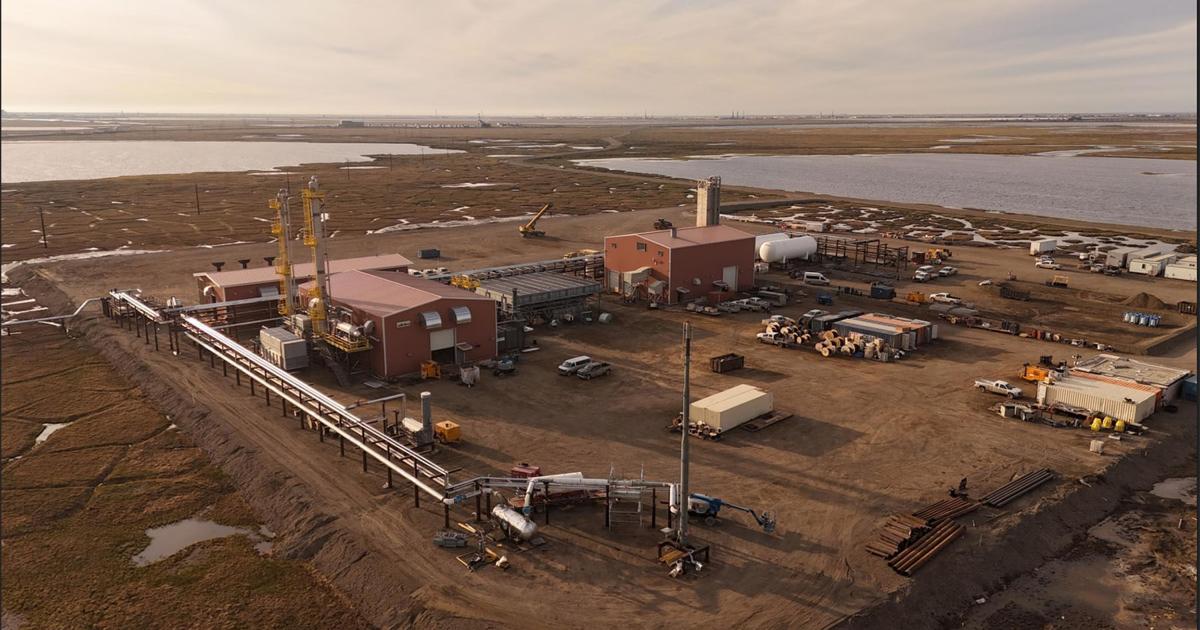The Harvest North Slope liquefied natural gas facility — and Interior Gas Utility’s efforts to truck gas from the North Slope — continue to face delays.
But Clay Beethe, Harvest Midstream’s business development director, said those delays are getting smaller as contractors overcome obstacles. Despite setbacks and minor issues, he expects gas to start heading down the Dalton Highway by Sept. 1 at the latest.
“Construction keeps getting leaner, leaner and meaner,” Beethe said during an IGU board of directors meeting on Tuesday. “We are all head full toward getting this thing wrapped.”
The facility’s power building has been completed and is now “powering the rest of the plant.”
The pre-treatment building is mostly complete, but still needs to be finalized for commissioning over the next few weeks. The building’s nitrogen plant is 95% complete and expected to be finished by the end of this week, before entering the commissioning phase.
“On the pre-treatment side, it’s been a busy few weeks there,” Beethe said. The amine flush, or carbon dioxide extractor, is undergoing its final checks. He said it should be able to run at full capacity.
“The flare is lit, so when you drive up to the facility, you can tell there is active gas in the plant at this point,” Beethe said.
Beethe noted that the final pre-treatment checkboxes should be completed by Aug. 4.
The plant’s truck loading facility is expected to be complete by Aug. 14. By Aug. 17, IGU’s LNG trailers should be on-site, ready to be filled and dispatched down the Dalton Highway toward Fairbanks.
In 2023, IGU signed agreements with Harvest and Hilcorp Alaska for North Slope natural gas. Hilcorp will supply the raw natural gas, and Harvest will process it at the new plant, which is nearly finished.
IGU announced the agreements as it considered additional or alternative sources to Cook Inlet basin natural gas. In 2022, Hilcorp announced it would be unable to execute new supply contracts for several customers due to the uncertain future of Cook Inlet’s available natural gas reserves.
That announcement caused several Railbelt utilities to scramble for solutions, including options to import gas from outside Alaska, increase investment in Cook Inlet, or pursue the proposed Alaska LNG pipeline project.
IGU, which currently processes LNG at its Titan facility in Point MacKenzie, looked north. Harvest’s new plant is capable of producing 150,000 gallons of LNG per day — three times the amount Titan can generate.
The contract includes provisions allowing Harvest to expand production capacity should IGU’s needs increase. IGU cited the agreement as essential to meet projected growth in Fairbanks and North Pole by 2032.
Initial gas delivery was targeted for October 2023, but the Harvest plant faced delays related to permitting, supply chains, and labor shortages.
One key piece of equipment didn’t fit properly and had to be sent back to France for refurbishment.
Beethe said that equipment has since been returned and installed for final testing.
“This is a critical part of the commissioning process and one of the slowest moments for the project, where we make sure we do this thoughtfully,” Beethe said. “It’s a big step for the project once it’s done.”
The Harvest North Slope plant requires the pre-treatment system to remove excess CO2 from the Prudhoe Bay-sourced natural gas. According to the U.S. Geological Survey, Prudhoe Bay gas contains at least 12% CO2, while Cook Inlet natural gas is nearly pure methane.
Beethe said Harvest is working with the Alaska Department of Environmental Conservation to adjust permits due to several issues, including one glycol fin fan bay being overpressured. The other four bays are operating and “provide enough cooling for operations.”
The plant’s installed thermal oxidizer stack heights also deviated from its DEC air pollution permit. However, ADEC granted a deviation to allow start-up while Harvest applies for a permit amendment.
The plant’s reverse osmosis unit, which produces demineralized water, needs to be replaced due to a malfunction.
“We are able to source demineralized water from some other sources, including Prudhoe Bay Park,” Beethe said. “It’s not a critical path, but it’s something we will have to work with the vendor on after the first LNG.”
IGU will use a contractor to haul the LNG, but it has purchased the specialized trailers needed for safe transport.
George Deal, IGU’s project manager, told the board that the utility conducted a dry run and made the necessary adjustments.
“There will be a few struggles when we get going, but I don’t think there is anything we can’t overcome,” Deal said. “We’ve got the trucking expertise of Middle Fork to back us up. Some of the climbs can pose challenges, but loads of this size have gone up and down that route before. It’s just a little different.”
